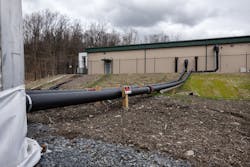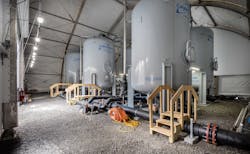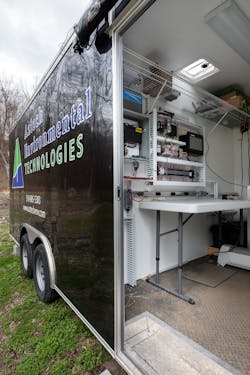Chances are you’ve heard of Perfluoroalkyl substances (PFAS), an emerging contaminant group that’s garnered national attention. PFAS are not only ubiquitous and believed to be damaging to human health, but also resilient. There are over 4,700 compounds in this group, and they’re found in food packaging, stain-resistant rugs and upholstery, non-stick cookware, and other industrial applications. Drinking water can be contaminated when a water source is near a facility that handles products containing PFAS. Exposure is believed to be linked to numerous health risks, including a higher risk of autoimmune diseases and cancer.
There has been no federal standard yet set for “safe” and “unsafe” thresholds for PFAS in drinking water, leading many states to set their own standards while regulatory consensus remains elusive. The EPA has set a public health advisory (PHA) and a proposed maximum contaminant level (MCL) but both are guidance issuances and not regulated or mandated.
The New York State Department of Environmental Conservation recently contacted LaBella’s Aztech Environmental team to consult on a case of PFAS contamination at the Butterhill Wells Water Treatment Plant in the Town of New Windsor, N.Y.
In September 2018, water samples taken by the New York State Department of Health (NYSDOH) tested positive for PFAS (PFOA and PFOS, in particular). New Windsor received preliminary verbal confirmation of a positive result at the time, followed by validated results in February 2019. Additional water samples were collected immediately, and test results received in April 2019 confirmed the initial results.
Case Study: PFAS Water Treatment from LaBella Associates on Vimeo.
The levels detected were below the EPA’s Lifetime Health Advisory Limit and even the State’s proposed 10 ppt MCL. However, out of an abundance of caution for its residents, the town shut down the well field and returned to the Catskill Aqueduct for its main source of supply while they worked on a solution.
New Windsor officials realized they needed to move quickly to find a solution for the Butterhill plant. A planned maintenance closure of the Catskill Aqueduct was scheduled for November 2019, and the aquifer had just become the Town’s primary water source. They turned to The New York State Department of Environmental Conservation (NYSDEC), who brought in LaBella’s Aztech Environmental team as well as their standby engineering firm, to develop an effective solution to treat the contamination quickly. The Aztech Environmental team designed, procured, and installed a PFAS treatment system for the New Windsor in only four months, using one of the most reliable treatment technologies that’s also readily available: carbon.
Granular Activated Carbon (GAC) has long been used in water treatment because of its ability to adsorb most organic chemical compounds, while allowing clean water to pass through. In New Windsor, the system consisted of six, 10-foot diameter, 20,000-pound carbon units, which allowed the Butterhill plant to produce 1,500 treated gallons per minute, or 2.16 million gallons/day (the balance of supply was provided by neighboring municipal systems and a smaller supply well, owned by the town). The Butterhill system also has solar-powered monitoring and reporting via a programmable logic controller (PLC) equipped with Human Machine Interface (HMI) technology.
Cities and towns located near potential PFAS sources should be testing for contamination regularly and proactively. Depending on your treatment plant and contamination levels, some may elect to seek uncontaminated water sources elsewhere. However, as the situation at Butterhill illustrates, cost-effective PFAS treatment is possible, and will likely become more refined with each community that tackles this challenge. WW
About the Author
Fil L. Fina III
Fil L. Fina III, PE is Environmental Remediation Program Manager at Aztech Environmental Technologies, a LaBella Company. Aztech and LaBella are a full-service environmental, geology/hydrogeology and remediation consulting and contracting firm. With over three decades experience as an engineer in the environmental field, Fina has managed all aspects of site clean-up or site remediation.


